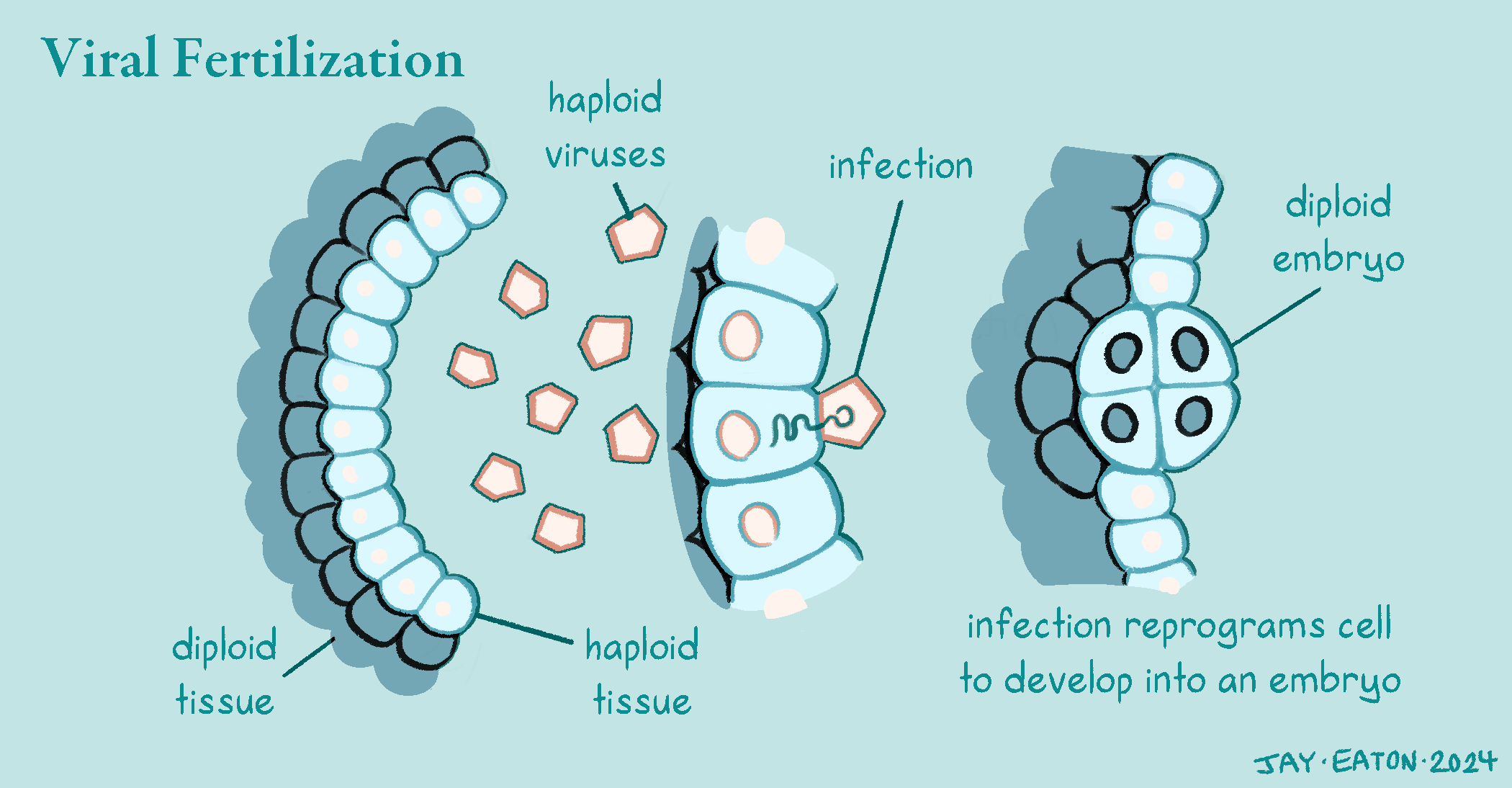Like all multicellular life on their planet, bug ferrets do not use gametes to reproduce. Instead, the “pitcher” genetic donor produces non-living viral packets that infect a specific receptive tissue on the “catcher” genetic donor. From the perspective of a planet where viruses are associated universally with disease, this may sound alarming, but the reproductive viruses produced by life on the bug ferret planet tend to be extremely specific outside of cases of specific parasitism. You could not catch a cold from bug ferret viral “sperm”, if nothing else because life on their planet does not use our DNA structure to store genetic data.
Ferrets are unisex and have skinny prehensile penises, a single cloacal opening, and a vagina. Like humans, their body is almost always ready to have kids, with a viral-receptive receptive patch of haploid tissue at the end of the oviduct. During sex one or both parties place a sticky packet of “viraliphore” tissue in the others’ vagina, which produces haploid viral packets until its energy reserves are exhausted and the tissue melts away. These viral packets fertilize the receptive tissue by infecting its cellular tissue with the genetic material of the donor, creating diploid embryos. In bug ferrets, only two infected cells will develop into embryos, and the rest are discarded as a shed lining. The embryos are encased into a 2 chamber egg case with a single shared yolk. All ferrets are essentially twins! The egg case is also shaped like a heart and bright magenta.
Common methods of birth control are hormone tablets and vaginal condoms, because penis condoms don’t work great on a flexible structure. Homosexuality is. Not… really a thing ferrets have a concept of, but most sex takes place in groups of 4 or more, as most family groups can have anywhere between 8 and 30 adult ferrets. Manual stimulation is enjoyed, but like avians they have pinchy nightmare mouths, so no oral. Anal sex is a relatively common activity, although frequently frowned upon for being potentially dangerous to the intestinal walls. Like humans, it’s safe enough with sufficient lube.

